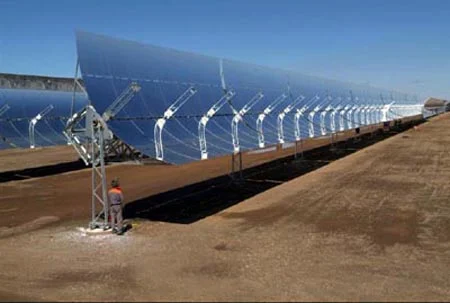Ground has been broken on what will reportedly become the world’s largest solar facility.
U.S. Secretary of the Interior Ken Salazar was joined by California state officials and representatives from the developer, among others, for the recent groundbreaking ceremony of the Blythe Solar Power Project.
This initiative may well allow California to reach and even surpass its goal of 33 percent renewable energy by 2020.

The solar facility is located in eastern Riverside County in the city of Blythe, California and will generate 1,000 MW of energy, or enough to power 300,000-500,000 homes, when fully operational.
It will be constructed in two 500 MW phases, each phase creating 1,000 construction jobs per year as well as up to 3,000 supply chain and related jobs and 220 permanent jobs.
The facility contains parabolic trough technology that feeds solar energy to collector tubes. These tubes then carry heated oil to a boiler, which then sends steam to a turbine to create electricity. This electricity will flow via a new 230 kilovolt (kV) transmission line that will connect Devers-Palo Verde #2 500 kV line at the Colorado River substation.
The Blythe Project is seen as a major step in realizing the goal of utility-scale solar power plants. It’s large size, however, could have negative environmental impacts on the local ecology.
To offset these impacts, the Bureau of Land Management (BLM) required developer Solar Millennium to provide funding for more than 8,000 acres of desert tortoise, western burrowing owl, bighorn sheep and Mojave fringe-toed lizard habitat.
This solar facility is the first of many in California and helps it earn the title of top clean energy state. While California certainly has an abundance of natural resources like sunlight, wind power and even potential geothermal, what has led the state to become the nation’s leader in renewable energy is its commitment to preserving the environment.






